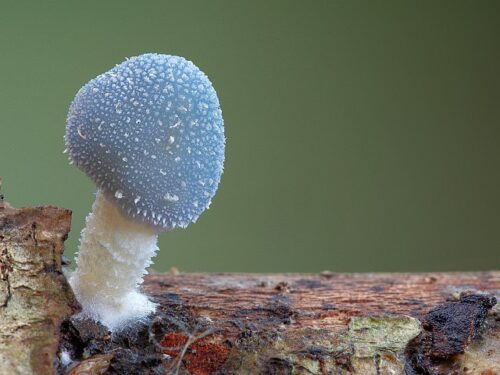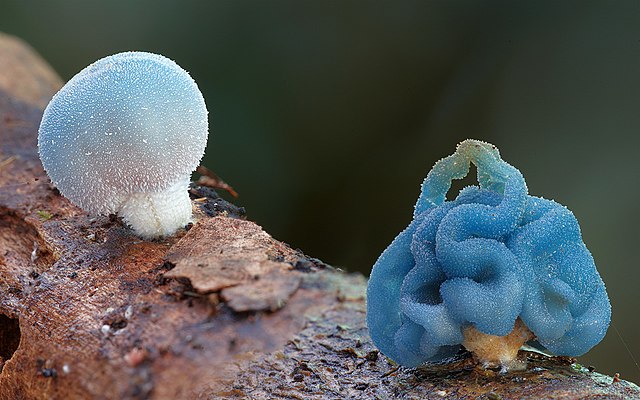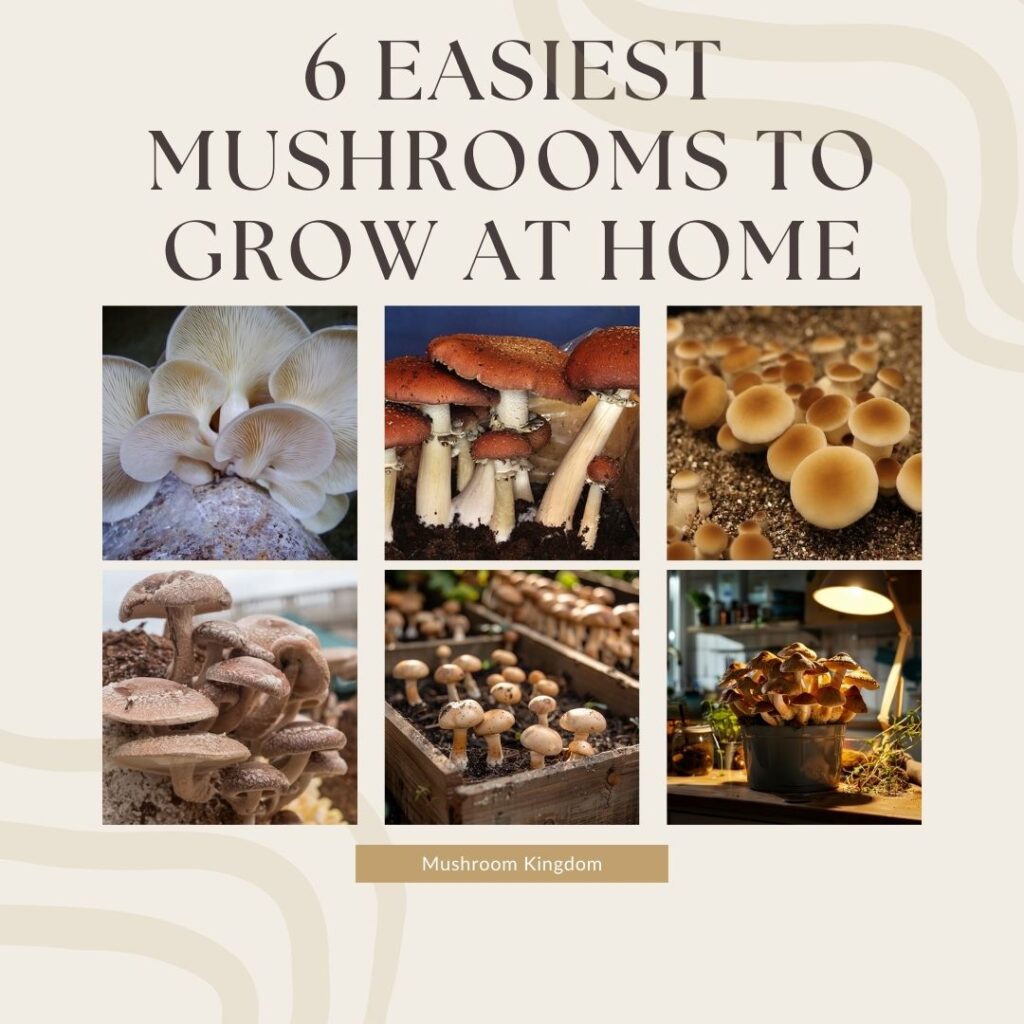Coprinopsis pulchricaerulea belongs to the family Psathyrellaceae, known for its intriguing lifecycle and striking appearance.
Found in various temperate regions, C. pulchricaerulea adds a splash of color and mystery to forest floors and grassy areas.
In this article, we will explore its taxonomy, morphology, habitat, ecological significance, and potential uses, highlighting why this fungus deserves our attention.

How to Identify Coprinopsis Pulchricaerulea
Identifying Coprinopsis pulchricaerulea requires keen observation and familiarity with its distinctive features. This guide will help you recognize this fascinating fungus in the wild.
Observe the Cap
First, examine the cap. Initially, the cap appears egg-shaped and enclosed, but as it matures, it expands to a bell shape. The vivid blue coloration of the cap distinguishes it from many other fungi. Over time, this blue color fades to a paler shade, so look for variations in hue.

Inspect the Gills
Next, look at the gills under the cap. The gills start white but quickly turn black as the spores develop. This transformation provides a clear identification marker. The gills are densely packed, which is another characteristic feature.
Check the Stem
Then, observe the stem (stipe). The stem is slender, white, and often hollow. It supports the cap and can appear quite delicate. This structural characteristic can help differentiate C. pulchricaerulea from other similar species.
Notice the Spore Print
After examining the cap and stem, consider taking a spore print. To do this, place the cap gills-down on a piece of paper and leave it for several hours. The spore print of C. pulchricaerulea is black, which aligns with other ink caps. This test can confirm your identification.
Evaluate the Habitat
In addition to physical characteristics, consider the habitat. Coprinopsis pulchricaerulea thrives in temperate regions with rich organic matter. You can find it in deciduous forests, meadows, grasslands, and along woodland paths. It typically grows in clusters on leaf litter, decaying wood, or grassy areas.
Note the Season
Seasonal timing also aids identification. This fungus usually appears in the spring and fall when conditions are moist and favorable for fungal growth. Observing the time of year can support your identification efforts.
Is Coprinopsis pulchricaerulea Edible?
Currently, there is limited information specifically addressing the edibility of Coprinopsis pulchricaerulea. Most resources focus on its identification and ecological role rather than its culinary potential.
Unlike some well-known edible fungi, such as the common mushroom (Agaricus bisporus) or the morel (Morchella spp.), C. pulchricaerulea has not been widely studied or recommended for consumption.
To understand its potential edibility, it is helpful to compare C. pulchricaerulea with related species within the Coprinopsis genus.
Some ink caps, such as Coprinopsis atramentaria (commonly known as the common ink cap or inky cap), are edible but with significant caveats. C. atramentaria contains coprine, a compound that causes adverse reactions when consumed with alcohol, leading to symptoms like nausea and vomiting.
This reaction, known as the “Antabuse effect,” makes it unsafe to eat with alcoholic beverages.
Where You Can Find Coprinopsis Pulchricaerulea
Finding Coprinopsis pulchricaerulea in its natural habitat can be a rewarding experience. It typically appears during the spring and fall when moisture levels are high, and temperatures are moderate.
Geographically, C. pulchricaerulea thrives in temperate regions around the world. You can find it in North America, Europe, and parts of Asia. Its distribution across these continents highlights its adaptability to various temperate climates.
Additionally, take seasonal timing into account. It typically appears during the spring and fall when moisture levels are high, and temperatures are moderate. These conditions favor fungal growth, so plan your search during these seasons for the best chances of success.
Search in deciduous forests. These forests, dominated by trees that shed their leaves annually, provide a rich layer of leaf litter, which decomposes and creates the perfect substrate for C. pulchricaerulea. The moist, nutrient-rich environment supports the growth of this fungus.
Next, consider grasslands and meadows. It often appears in grassy areas, where it can grow on decaying plant matter. The open spaces and abundant organic material in these habitats make them ideal for fungal growth.
Potential Uses and Benefits
While not as widely studied as some other fungi, Coprinopsis pulchricaerulea holds potential for various applications.
One of the most promising areas is bioremediation, where fungi are known for their ability to break down pollutants. C. pulchricaerulea could potentially help clean contaminated soils.
Additionally, although not yet fully explored, many fungi possess bioactive compounds with medicinal properties. Future research might uncover health benefits associated with C. pulchricaerulea.
Moreover, this fungus serves as an excellent subject for educational purposes, helping students and enthusiasts learn about fungal biology and ecology. These potential uses highlight the need for further research into this captivating species.
Etymology Explained
Let’s break down the etymology step by step.
Genus: Coprinopsis
First, consider the genus name “Coprinopsis.” This name combines two parts: “Coprinus” and the suffix “-opsis.”
- Coprinus: The name “Coprinus” comes from the Greek word “kopros,” meaning “dung.” This refers to the habitat of many species in the genus, which often grow on dung or decaying organic matter.
- -opsis: The suffix “-opsis” derives from the Greek word “opsis,” meaning “appearance” or “resemblance.” Thus, “Coprinopsis” suggests a resemblance to the genus Coprinus, which includes many well-known ink caps.
Species: pulchricaerulea
Next, examine the species name “pulchricaerulea.” This name also has two parts: “pulchri-” and “caerulea.”
- Pulchri-: This prefix comes from the Latin word “pulcher,” meaning “beautiful.” It highlights the attractive appearance of the fungus.
- Caerulea: The term “caerulea” derives from the Latin word “caeruleus,” meaning “blue.” This clearly refers to the distinctive blue coloration of the cap.
Full Name: Coprinopsis pulchricaerulea
When combined, “Coprinopsis pulchricaerulea” effectively describes the fungus. The genus name indicates its relation to the dung-loving Coprinus genus, while the species name celebrates its beautiful blue cap. Together, they provide a scientific yet descriptive name that captures the essence of this remarkable fungus.


